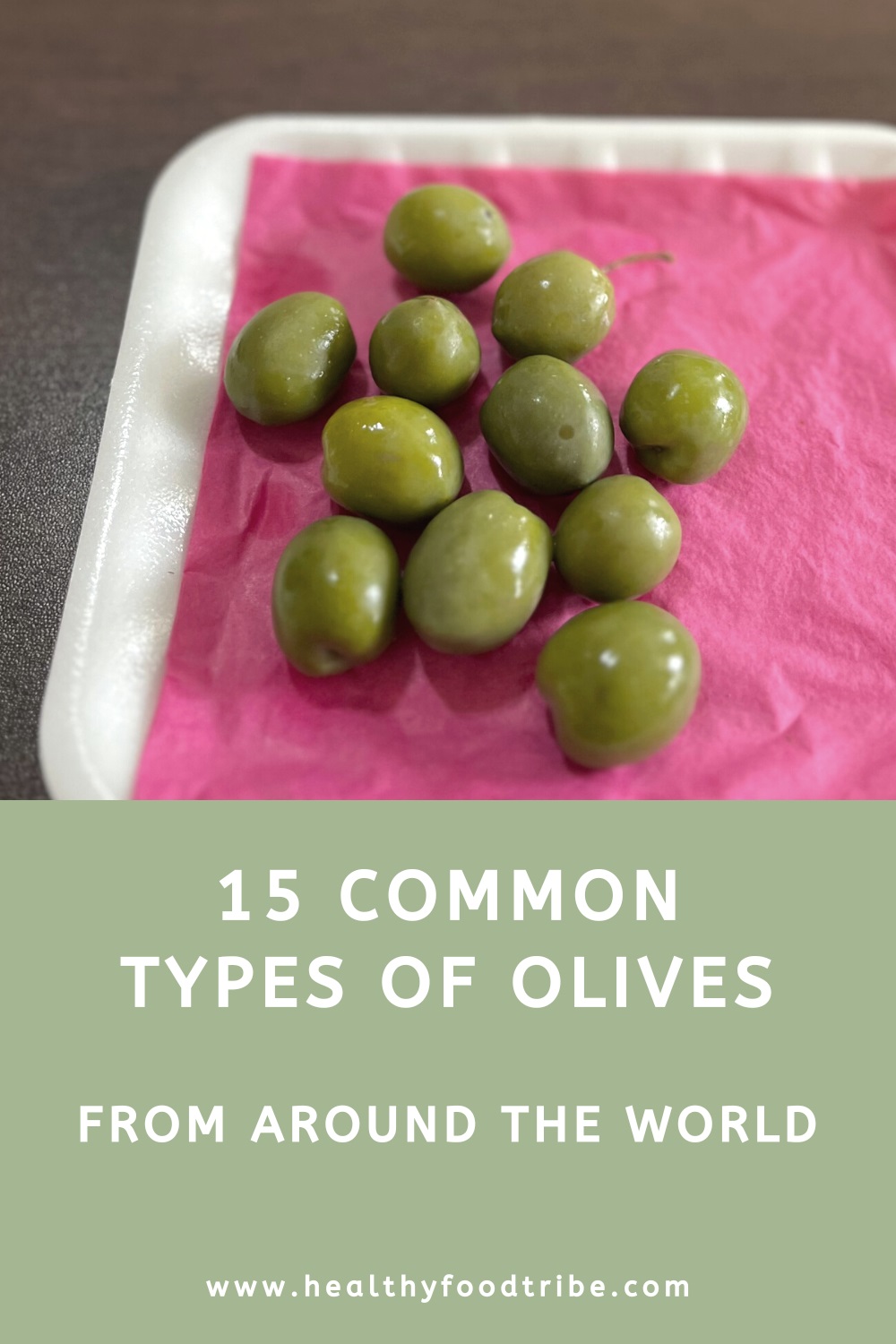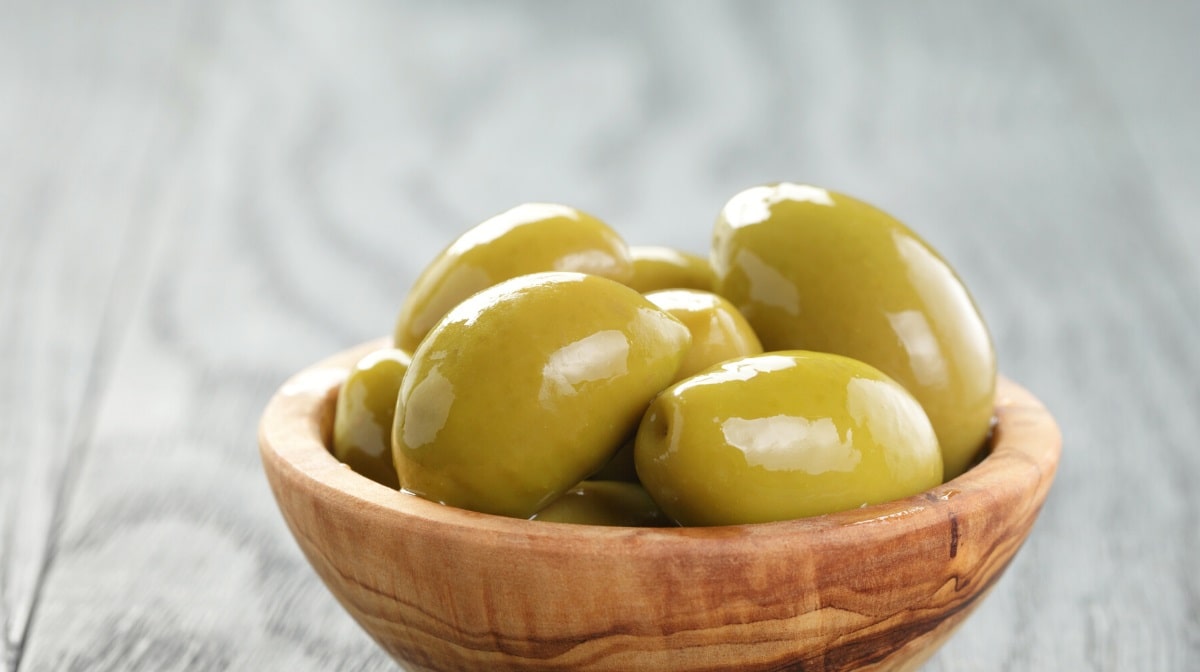Last updated: November 8, 2023
A guide with fifteen common types of olives cultivated around the world, each with unique colors, sizes, and flavors.
Did you know there are hundreds of different varieties of olives and olive trees worldwide? Olives are certainly not for everyone, but my appreciation for this high-fat fruit has grown to a point where I try to eat them almost daily.
Over the years, I’ve slowly acquired a taste for olives, so much so that I often eat them as a quick snack in the afternoon. I also regularly add olives to my meals and salads for extra flavors and nutrients.
Below, I will share 15 of the most common olive types. Some of the below olives are easy to find in grocery stores, but others require a bit more searching. My favorites? Kalamata olives and Castelvetrano olives!
1. Castelvetrano
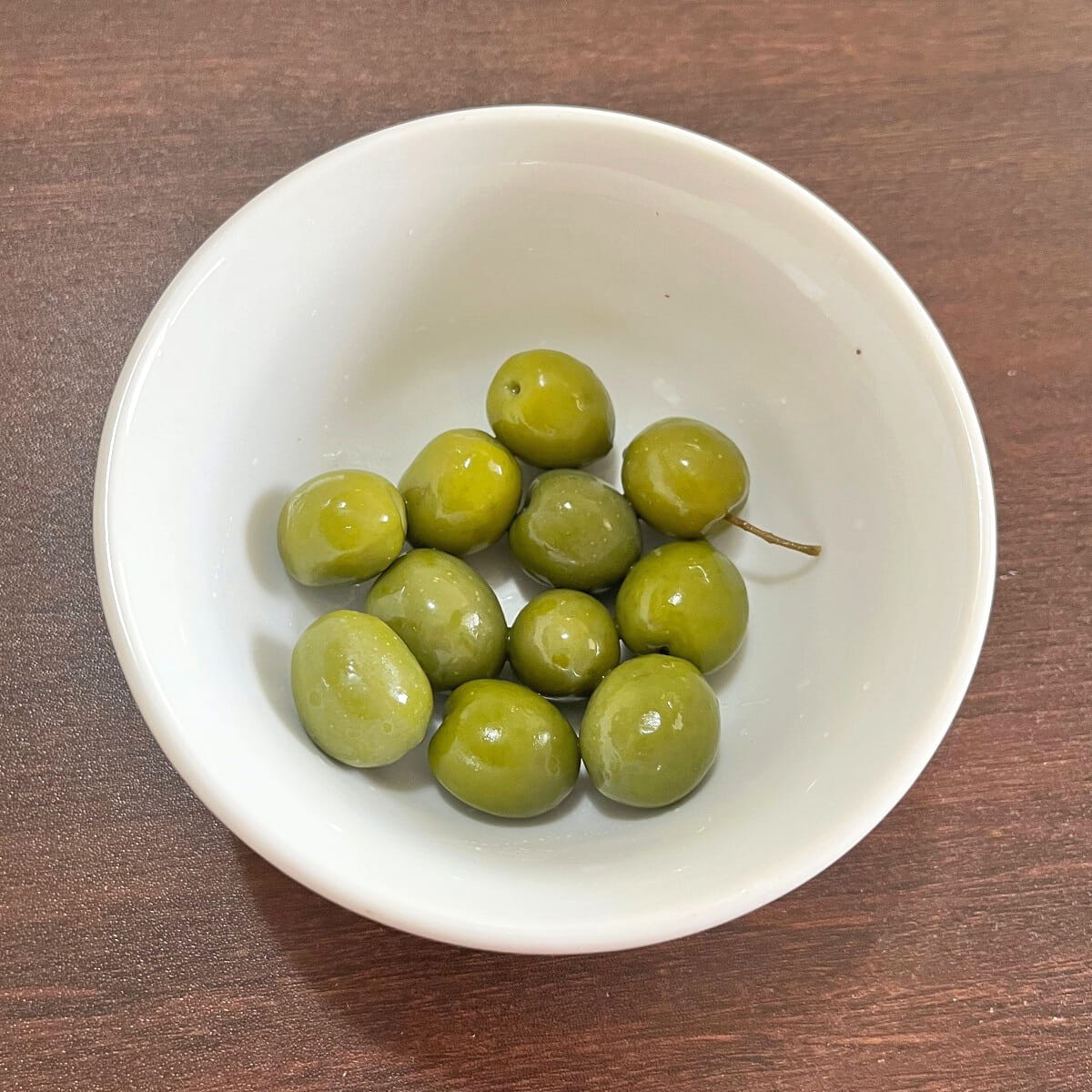
Native to a town in Sicily in southern Italy that goes by the same name, the Castelvetrano olive has a recognizable green color.
With their somewhat mild flavor, Castelvetrano olives are one of the more popular types of olives and are surprisingly pleasant to eat as a snack.
Firm on the outside but smooth and soft on the inside, the round, medium-sized Castelvetrano olive is often served on cheese platters, in Italian antipasti dishes, and in Mediterranean-style salads.
But as tasty as they are, an important reason why Castelvetrano olives are cultivated is because of the production of olive oil.
2. Cerignola
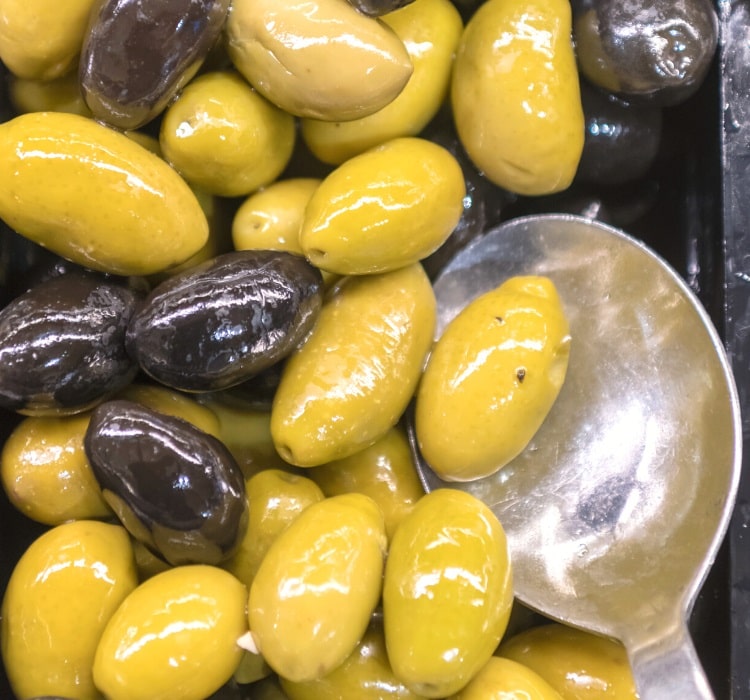
Originating from the province of Foggia in the Puglia region of Italy, this tasty olive is named after the town of Cerignola. It is also known as the Bella di Cerignola olive.
The Cerignola olive is a large-sized olive available in three beautiful colors: green, black, and red, each ripening at different stages and having unique flavors. The red version is dyed and not all-natural.
The green Cerignola is harvested before it fully matures and boasts a firm texture and a slightly sweet, buttery taste. The black variant is allowed to fully ripen on the tree and is softer and sweeter, with a full-bodied flavor. The red type is rare and more of a novelty.
Because of their size, Cerignola olives are often stuffed with other ingredients and do well on cheese platters or as appetizers.
3. Niçoise
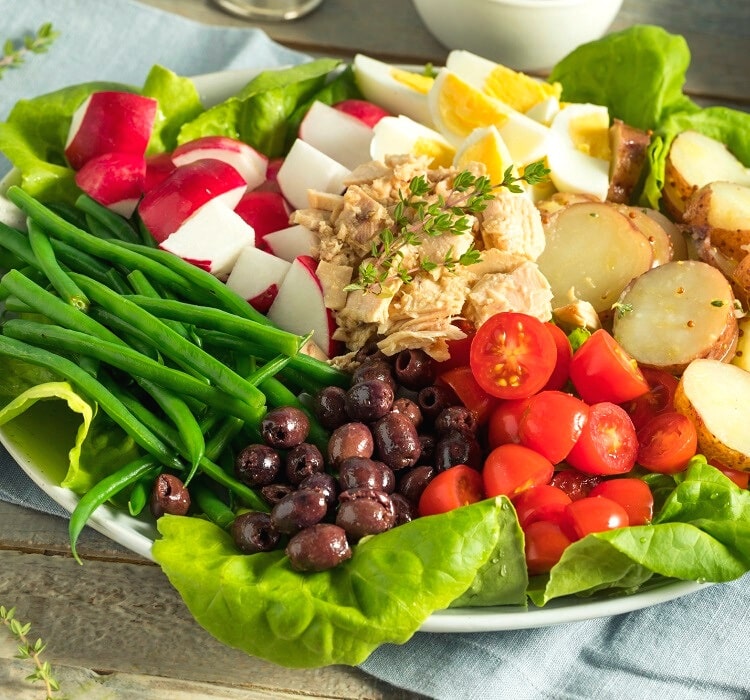
The French Niçoise olive is a small but tasty, dark brown or black olive, often used in salads or served as an aperitif in the Provence region in southeastern France.
Niçoise olives are known for their distinct flavor: a delicate blend of nutty, fruity, and slightly bitter tastes. Unlike many other olive varieties, they have a somewhat wrinkled appearance, which adds to their charm.
The Niçoise olive is harvested when the fruit is at a ripe stage, giving it a dark color. After harvesting, they are typically cured in brine before being packed and sold for consumption.
This type of olive is best known as the core ingredient in salade niçoise, a traditional salad from the French city of Nice featuring Niçoise olives, tomatoes, hard-boiled eggs, and tuna or anchovies.
Read more about the processing of olives in my guide explaining the different methods to remove the natural bitterness of olives and get them ready for consumption.
4. Gaeta
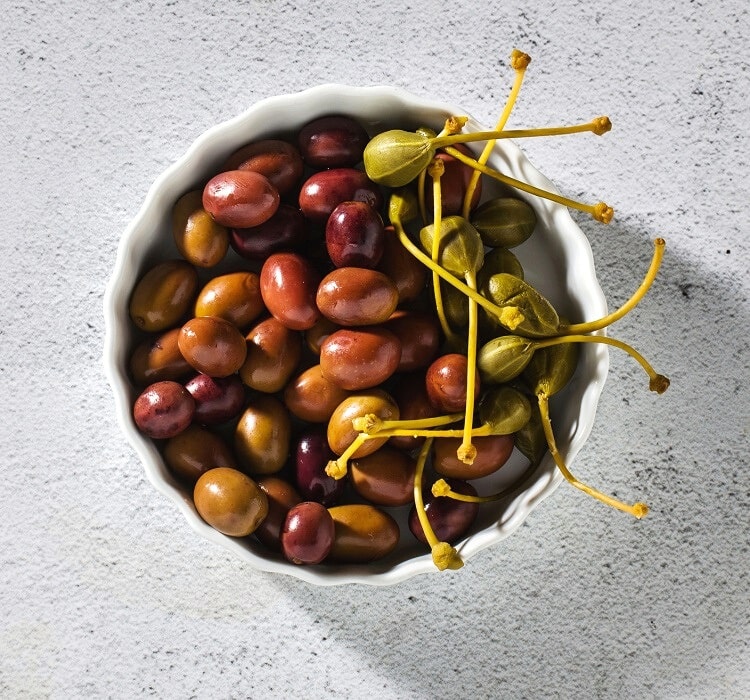
Named after the coastal town of Gaeta in the Lazio region in central Italy between Rome and Naples, the small Gaeta olive has a purplish-black hue and is celebrated for its unique flavor and versatility.
Black Gaetas are harvested when fully mature, then dry-cured in salt and stored in oil, resulting in a sweeter, mild, buttery taste. Green Gaeta olives are harvested young and then brined, which gives them a slightly tart and fruity flavor.
Gaeta olives have a unique texture: soft and a little chewy, unlike the firm bite of some other olive types. They can be eaten as is, added to salads, or incorporated into pasta and pizza.
5. Ligurian
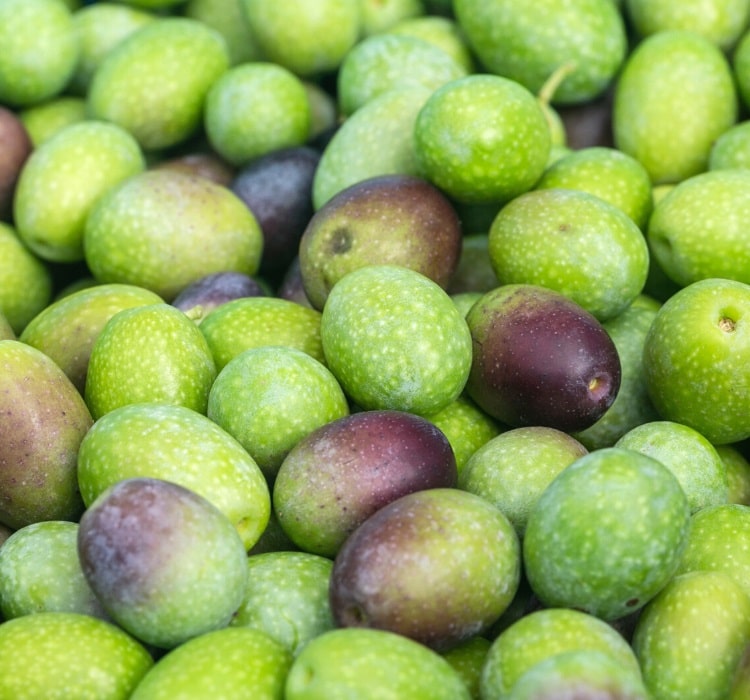
Also known as the Taggiasca olive, the Ligurian olive originates from the Liguria region in northwest Italy, close to the border with France. The name Taggiasca comes from the town of Taggia in that region.
Usually picked when fully ripe, the Ligurian olive transitions from a vibrant green color to a dark brownish-purple shade. It has a delicately sweet flavor with a hint of almond and hardly any bitterness.
Ligurian olives are tender and offer a smooth, buttery texture, which makes them popular as snacks and as ingredients in various dishes, from salads to cheese platters.
6. Picholine
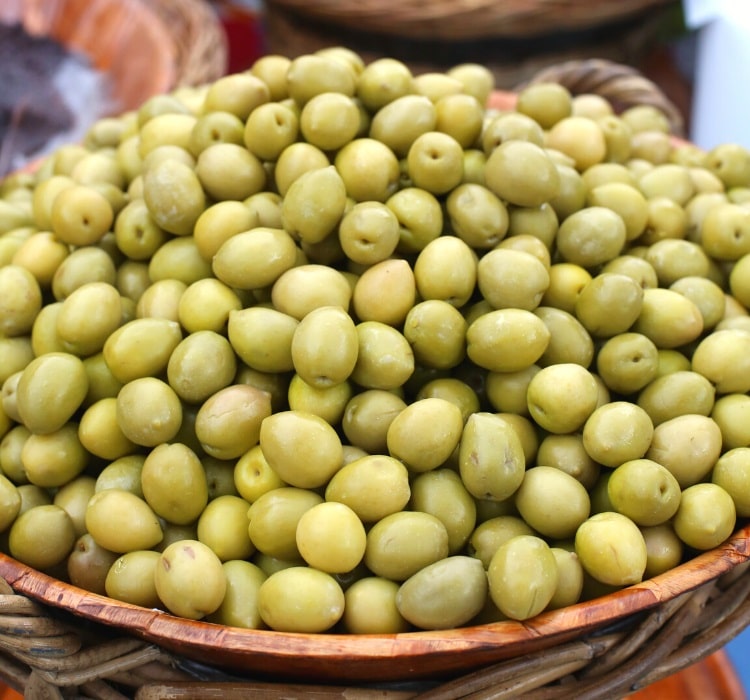
The Picholine is a salt-brine cured olive, originating from the region of Gard in southern France. It is produced for consumption as well as for olive oil.
It’s a pretty, green-colored olive with a full and somewhat nutty flavor that can easily be consumed as a savory snack or in cheese and antipasto platters. It has a pleasantly crisp and firm texture.
While the Picholine olive is native to France, it has outgrown its home country and expanded to other parts of the world. It is typically harvested when they are green and not fully mature.
7. Alfonso
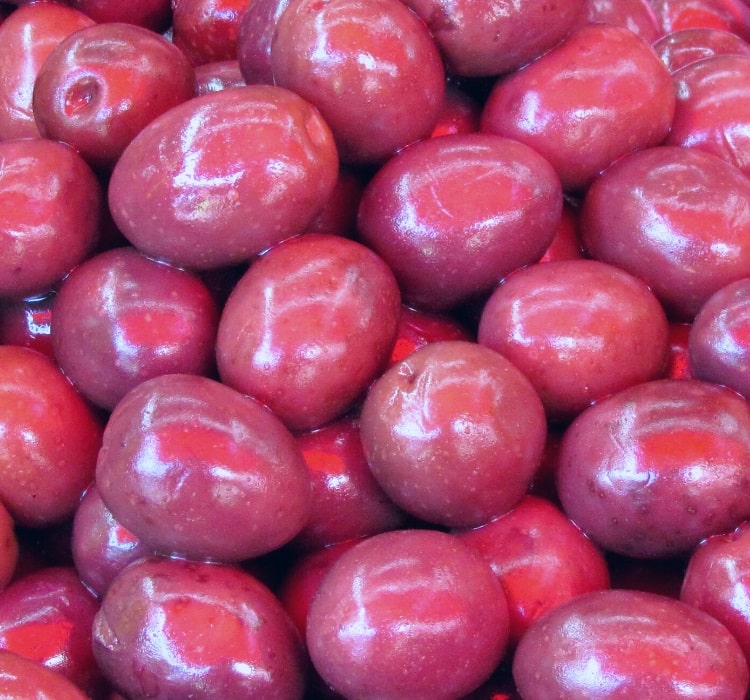
The Alfonso olive is a bit unique in this list of (mostly European) olive varieties in the sense that it has its roots in Chile and Peru.
They are quite large in size with a deep purple color and have a soft, tender, and somewhat juicy texture. Alfonso olives can be enjoyed straight from the jar, or added to salads, pizzas, or tapas dishes.
Typically harvested when fully ripe, Alfonso olives are traditionally brine-cured in red wine and vinegar, resulting in a distinguishable, somewhat sour flavor.
8. Mission
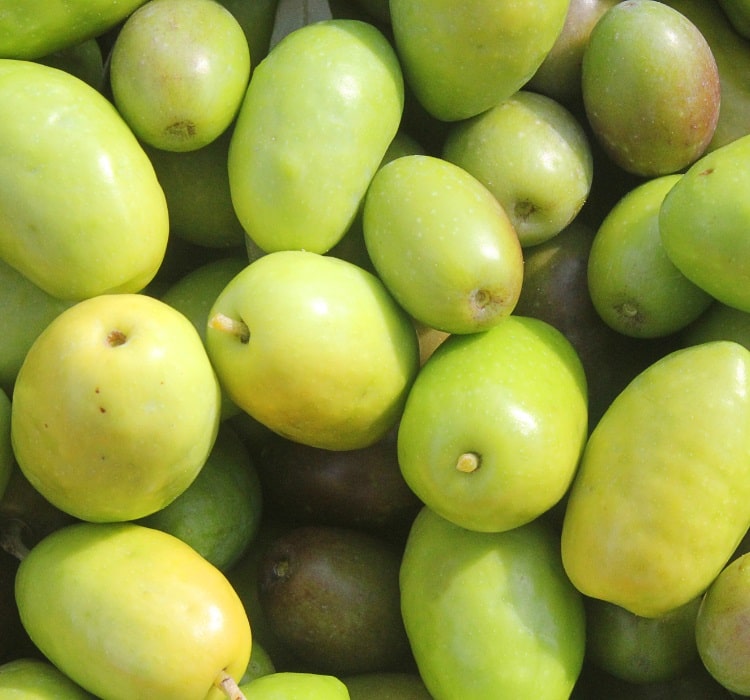
The Mission olive is grown in the sunny state of California, brought there by Spanish missionaries in the 18th and 19th century, which explains the name.
It’s a small, light-green olive with a relatively firm texture and robust flavor, produced for human consumption as well as for olive oil.
However, when allowed to fully ripen, the Mission olive gets a glossy black color and develops a mellow, slightly sweet taste. The meaty texture remains and makes them the perfect snack.
9. Arbequina
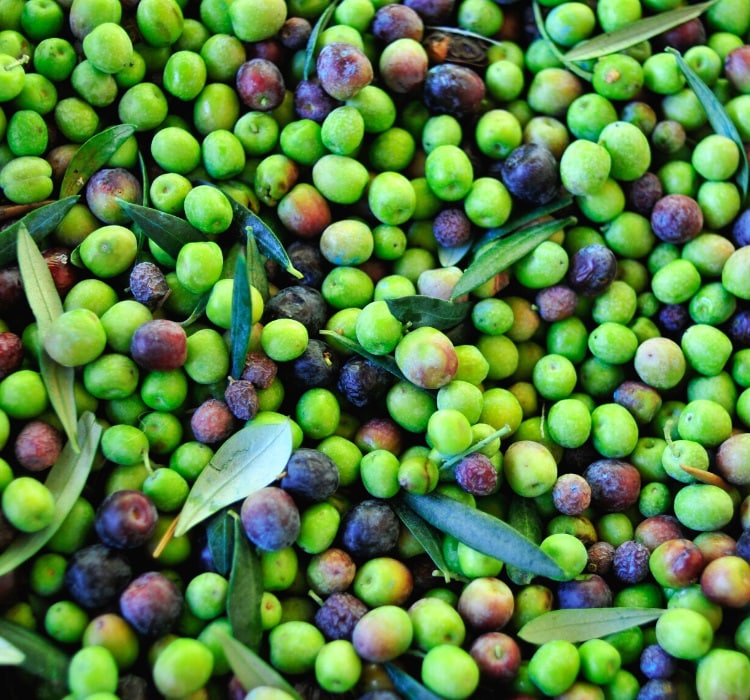
Originally grown in the Catalonia region in Spain, the Arbequina olive is today one of the most cultivated olives in the world.
Arbequina olives are grown in many parts of the world, such as South America, northern Africa, and even Australia. Depending on their ripeness, they have a distinct oval shape and a beautiful green to brownish-purple hue.
The Arbequina olive is small but well-known for its incredibly aromatic and balanced flavor, best described as fruity with a hint of almond and apple. The slightly buttery texture is a bonus. But as tasty as Arbequina olives are, they are mainly grown for olive oil production.
10. Kalamata
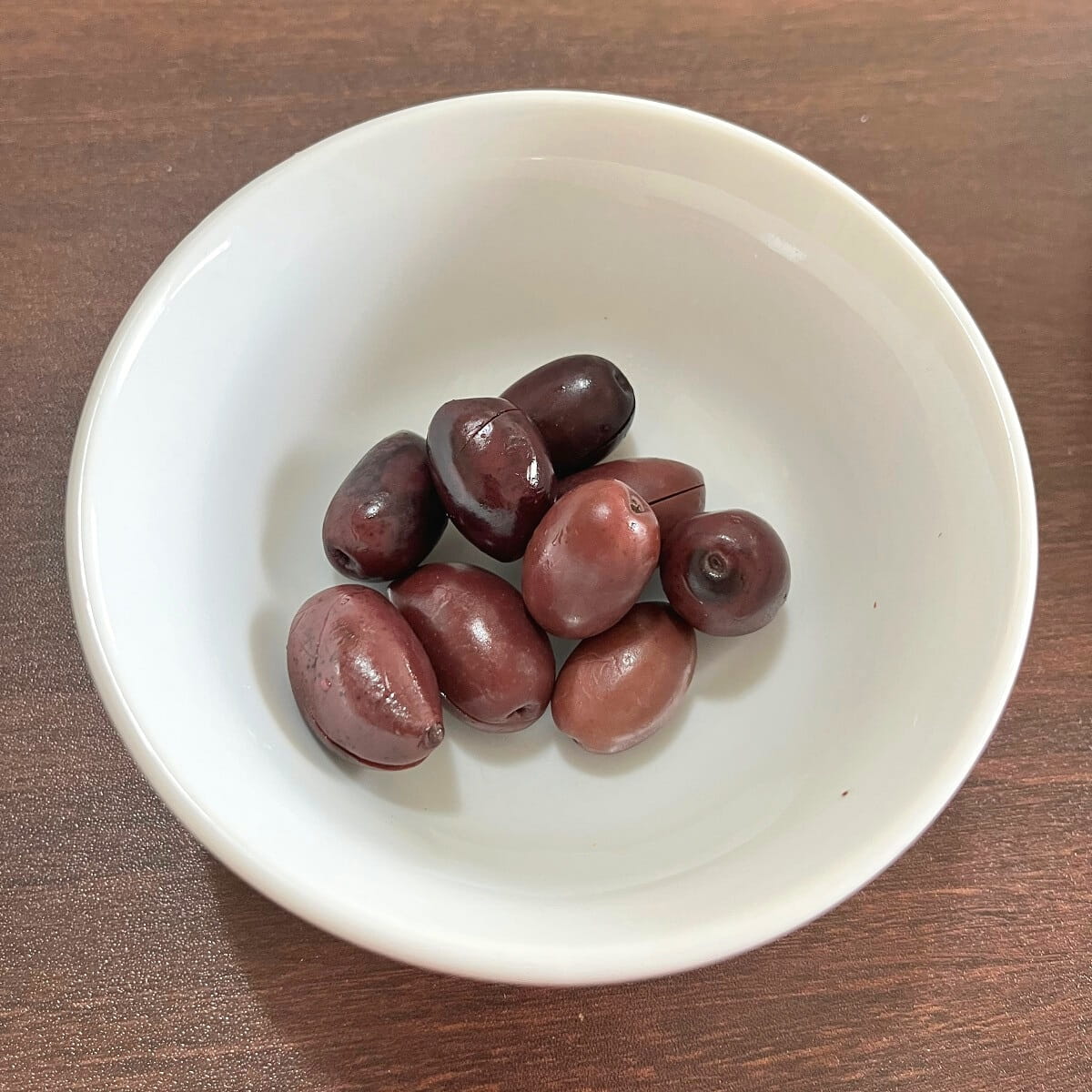
Native to Greece, Kalamata olives are another popular variety of olives. Also spelled Calamata and often referred to as simply “Greek olives”, Kalamata olives originate from a Greek city that goes by the same name.
Kalamata olives have been grown and eaten for centuries in the Kalamata region, the second largest city of the Greek peninsula of Peloponnese.
Ripe Kalamata olives are dark purple and cannot be picked when they are still green. They are also bigger and have a more rectangular shape than other common olives.
They have a robust and full-bodied taste and a smooth and pleasing texture, and are a common staple in Greek salads and an ingredient in Mediterranean dishes.
11. Beldi
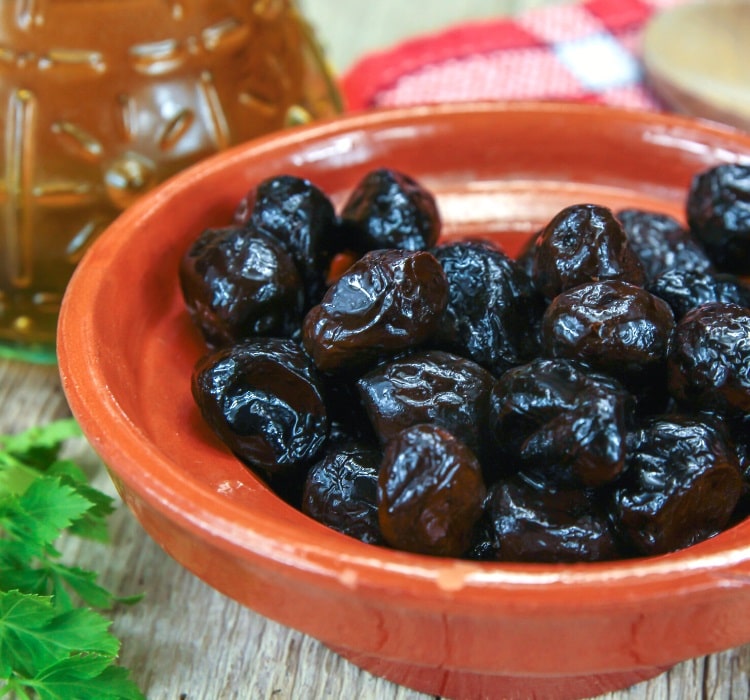
The small to medium-sized Beldi olive originates from Morocco in northern Africa. It’s a dark-colored, dry-cured olive with a potent and somewhat fruity flavor.
The Beldi olive is typically harvested when it is fully ripe and then dry-cured, usually in salt, which gives it a concentrated flavor and a slightly wrinkled appearance.
The firm and chewy texture, in combination with the pleasantly rich flavor, makes the Beldi an excellent table olive, served in salads or as appetizer snacks.
12. Amfissa
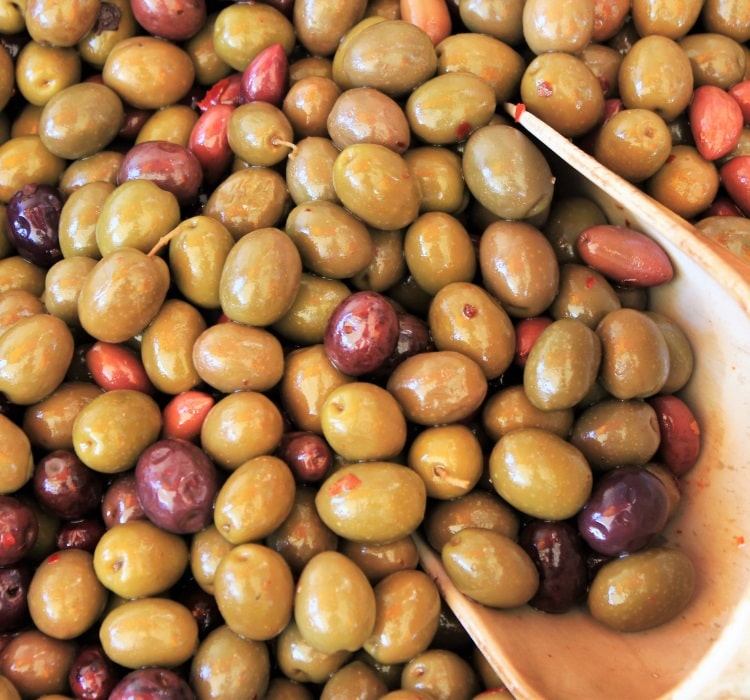
Harvested as both green and black, the Amfissa olive is quite a popular Greek olive grown exclusively in regions of Central Greece.
Named after the town of Amfissa, the round-shaped Amfissa olive is cherished for its versatile nature and exceptional flavor.
Young green Amfissa olives offer a firm texture and a buttery, citrus-like taste, while the fully ripe black version has a softer texture and a more robust, slightly sweet flavor.
Amfissa olives are a delight on their own or when used in salads, pasta, and traditional Greek dishes. They are also particularly suitable for stuffing with ingredients like garlic, almonds, or cheese.
13. Nyon
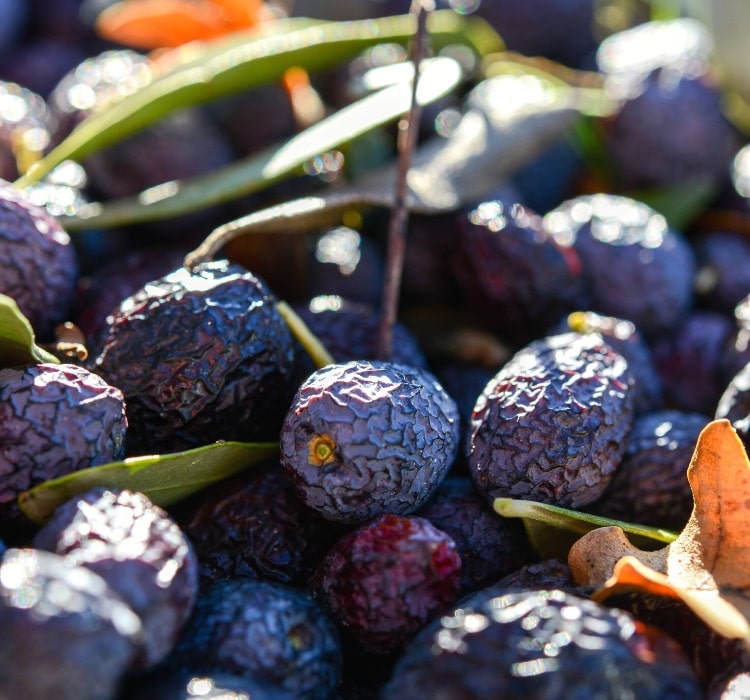
The Nyon is an authentic French olive originally grown in the Provence region in southeast France. It is named after the town of Nyons.
This small to medium-sized, dark-colored olive is dry or oil-cured. The Nyon olive’s wrinkled skin is a result of a long curing process that concentrates its flavors.
They have a surprisingly soft texture with a rich, buttery, and slightly tangy taste. This distinct flavor makes them a popular choice for appetizers and an exciting addition to salads and pasta dishes.
14. Gordal
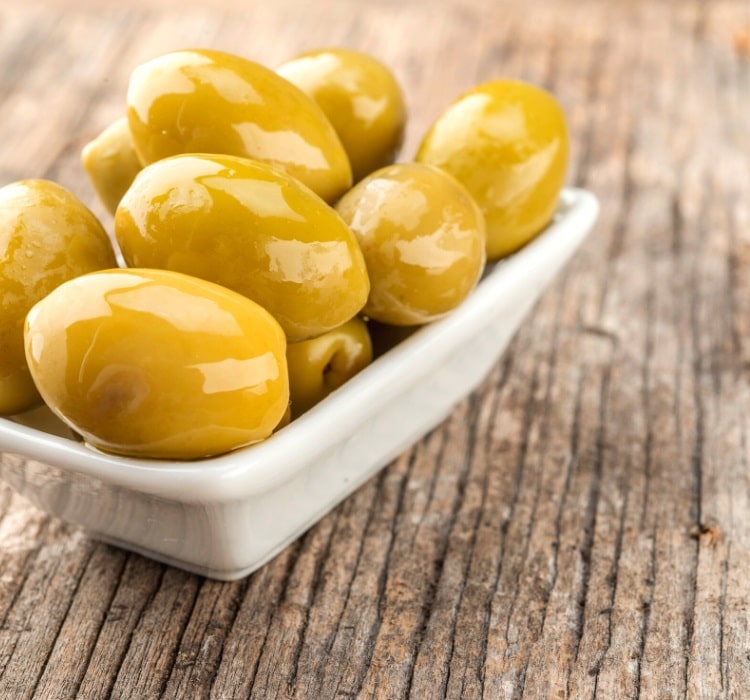
Often served as tapas, the full-rounded, green Gordal olive is another Spanish olive, primarily grown in Andalusia in the south of Spain.
Gordal literally means “fat one”, which seems like a fitting name for this proud, firm, rich, and tasty olive. The Gordal olive is typically harvested before it’s fully mature, which results in its bright, vibrant color.
These olives are known for their firm, juicy texture, and memorable flavor, best described as a delightful balance of saltiness and bitterness with a touch of spiciness.
15. Manzanilla
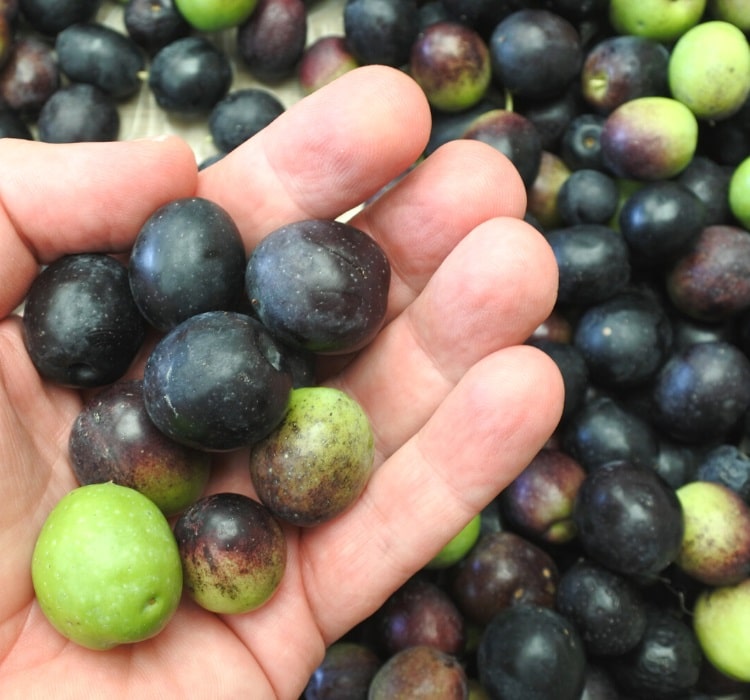
Similar to the Gordal, the Manzanilla olive is another Spanish olive that is first lye-cured and then packed in brine. It has a green or black color.
Manzanilla means “little apple” in Spanish, and is the perfect description for these medium-sized, round olives that are as popular as they are delicious.
The Manzanilla olive (or Manzanillo) is one of Spain’s most common types of olives, used both as a fruity table olive and for olive oil production.
